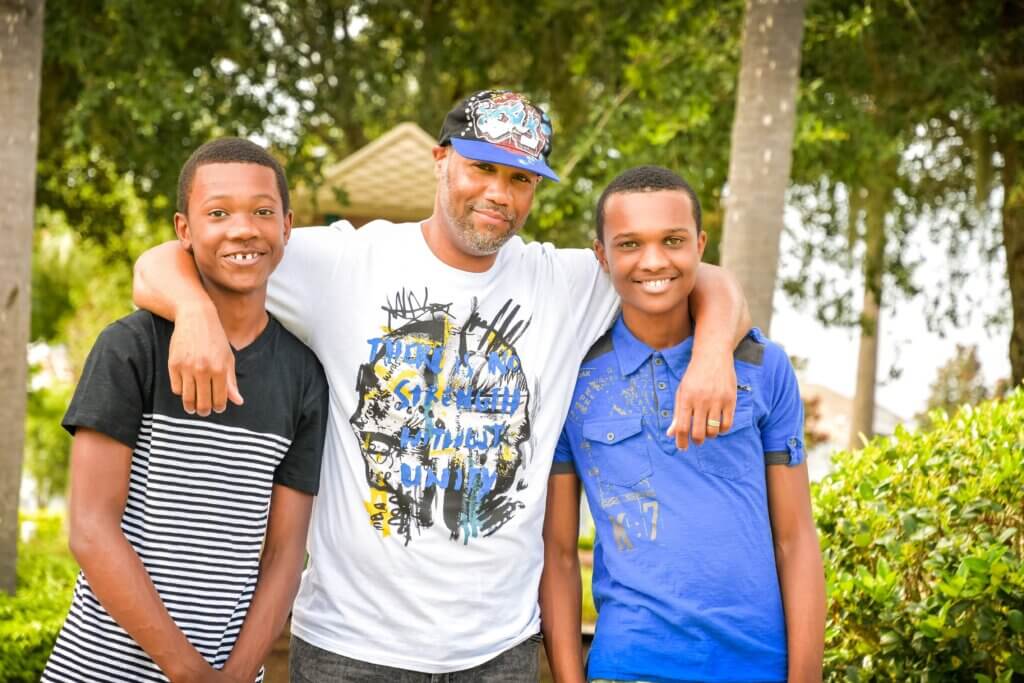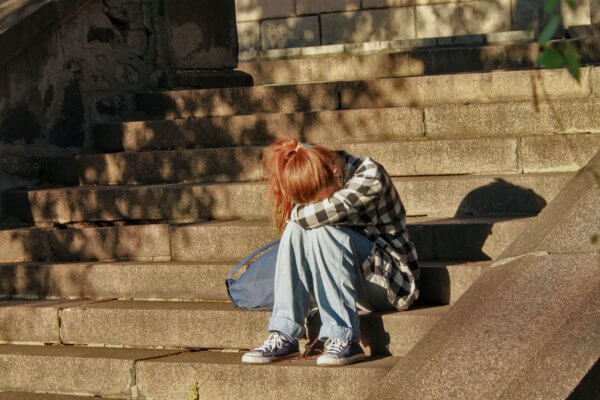Exploring “Is This Positive Discipline?”
A lot of parents and caregivers who read my blogs or listen to my podcast are interested in Positive Discipline philosophy but haven’t actually taken a Positive Discipline class or program. You might hear some things that inspire you, but you may be asking, “Is this Positive Discipline?” I know it can feel unclear, so I want to break it down so you know some criteria about if you’re handling things the Positive Discipline way. Know that I’m not here to judge! It’s not about being a perfect parent, it’s about sharing information and guidance to support you if you’re heading in a Positive Discipline direction in your home and with your kids.
I’m going to use the five criteria for Positive Discipline by Dr. Jane Nelsen here. She’s the author of the original “Positive Discipline” book, an Adlerian therapist, a brilliant woman, and is a friend and mentor of mine. When I talk about Positive Discipline, I explicitly mean her philosophy. There’s a lot of stuff out there about positive parenting, gentle parenting, peaceful parenting, and that is all good stuff. Positive Discipline fits under that umbrella of positive parenting, but Positive Discipline is its own, explicit program with books and courses.
Dr. Jane Nelsen writes about the five criteria of Positive Discipline, and I’m going to tease them apart a bit here.
Criteria 1: Is what I’m doing kind and firm at the same time?
Is it respectful and encouraging? Am I being kind and connected to my child while also holding boundaries and respecting myself and the situation? When you’re in it, it’s hard to be kind and firm at the same time. We’re really good at connecting with our kids, and we’re really good at holding boundaries, but at the same time? There aren’t a lot of great models for that.
The other thing that happens is that sometimes parents ask “but what if they don’t follow through?” I think this is an interesting place to pause and recognize that that might not be the right question. This question comes from parents who don’t expect their kids to follow through. If you don’t expect and don’t trust the follow through, you’re going to make that you’re reality. Remember that our kids speak to us in code – toddlers through teens! They tell us about their experience through their behavior. When we respond to their behavior with kindness and firmness, which is sometimes through inquiry, our kids feel respect, understood, and valued, and they find ease and cooperation.
Firmness isn’t just laying down the law and setting boundaries. Sometimes firmness is curiosity.
“Wow, you are having a really hard time right now, and I’m really curious what’s going on for you.”
Criteria 2: Is what I’m doing helping my child feel a sense of belonging and significance?
This is key! At the heart of Positive Discipline is a feeling of significance and belonging. Positive Discipline is based on the work of Alfred Adler, who was one of the first social psychologists, and he found that human behavior is always motivated and influenced by a sense of belonging and significance. This is what behavior is about for all of us – toddlers, teens, adults. Mischief comes from a perception of whether or not we matter and feel connected. This is all humans, not just children.
This is about our perception, which is clouded by experiences, judgments, and beliefs. Nobody has an objective lens. People do hard work to get as much clarity as possible, and we’re still influenced by life experiences, for better or worse. We all have clouded lenses that we see the world out of. Kids have limited life experiences to see the world with. What we all have in common is that we all have unique lenses. When we start to embrace Positive Discipline parenting, the practice is to remember that whatever we do, we want our kids to feel connected, seen, and heard.

Criteria 3: Is what I’m doing effective in the long-term?
This is a big one. I love this one, and I often ask myself this question. This question can make Positive Discipline a tough sell because we have to trust the process over time. We’re in it for the long run, not just in the moment. A lot of us think we can make our kids have values, manners, and social skills. We feel like we give those things to our kids, and we try hard to drill it in. Lectures, threats, bribes – we’ve all been there, trying to bestow our values, and sometimes that might work, but really we need to remember that our kids learn through experience over time. That’s how they develop their values and choose how to show-up in the world.
Sure, we can do short-term parenting and stop behaviors in the moment, but these might harm our relationship with our kids.
It also robs kids of valuable experiences and natural consequences. They only develop a strong internal compass when they have the opportunity.
Caveat: We, of course, don’t let young children run into the street and wait for a natural consequence to teach them a lesson. We always step in when it’s about safety, but a lot of us step in way too soon and get in the way of kids developing their guidance system. We’re afraid. We worry. We don’t want our kids to be uncomfortable or embarrassed. We do want to offer guidance and we offer advice, but we want to offer things that are effective in the long-term.
Criteria 4: Is what I’m doing teaching valuable social and life skills for good character?
We all want our kids to have good character! We want kids to be respectful, care for others, problem solve, make contributions, and be cooperative, right? Positive Discipline is something we do all the time and in the moment.
We don’t just do Positive Discipline when things are sideways. We do this all the time.
We have to embody this idea that this is just who we are. The all-the-time vibe comes when we celebrate mistakes, we contribute, we work together, we find solutions, model compassion and care for others – this is just what we do in our family. This is how we show up most of the time (and nobody does this all of the time – it’s messy). Kids are kids. They need to make mistakes, and we need to have a family culture about how we show up when mistakes are made. We focus on personal growth in our family. This is just what we do.
We’re modeling Positive Discipline in the sideways moments, too. We self-regulate when we’re heated, we find solutions, and we plan for next time. It’s not just one script or “three easy steps” for when kids stumble. It’s way more than that.
Side note: the word discipline has a real bad rap. A lot of people think discipline means punishment. “You’ve gotta discipline that kid!” No! That’s not what we’re talking about.
Discipline is teaching.
Giving them structure, letting them feel seen, heard, and cared about. Imagine the world if there was a generation of kids who were raised in a way that didn’t leave them with wounds to heal as adults. It’s huge.
Criteria 5: Are we inviting our child to discover how capable they are and how to use their personal power in constructive ways?
Yes! Yes, yes, yes. Positive Discipline, at its best, allows our kids to hold the energetic responsibility of designing their own life. It allows our kids to recognize that they have power over their experience and that it’s always available to them. Of course this looks different for a toddler, with school-age kids, and with teens.
I think a lot of kids move through the teen years with parents who have a hard time giving them the reins to design their own life. I’ve had this tested, over and over, with my daughter. She ripped the responsibility out of my arms and said, “Nope. I’m doing it differently.” Being on the other side of this experience and looking back now is a huge gift. She has really come to a place of deeply understanding that she has the energetic responsibility of designing her life. She knows she has power over how she experiences things and that this is always available to her.
Parenting has a long timeline. We keep having the same experiences again and again, but if we’re committed to Positive Discipline, our own personal growth, holding relationship, and practicing the tools, then every time we see these challenges, we can handle them differently and get to different outcomes. It’s a spiral – life is linear and cyclical. It can be maddening!
To me, the biggest part of Positive Discipline is realizing that this isn’t a formula or a gimmick. It’s not about tricking kids into doing what we want. This work is about being in an open, transparent relationship with our kids, our partners, and the world. When we don’t know what to do, we can say “I don’t know how to navigate this.” We can say, “I’m worried. I’m scared, and I need to sit with this,” or “Whoa! I’m very angry right now. I need some time.” We get to be transparent and real with our kids.
We let them into our experiences – not because we want them to fix it or to blame or shame them, but because it’s healthy to share and be expressive.
When we find ourselves in a frayed, fragile relationship, we can be transparent there too. The first place to be transparent is with yourself. Asking yourself, “Am I showing up in a way that’s hurtful? Am I being controlling? Critical? Dismissive?” If the answer is yes, you can step in and take responsibility. “I know I’ve been hurtful.” “I know I haven’t been taking this seriously.” We, as adults, open that conversation. I promise you, if your relationship with your child needs work, I’m sure there is something you can own there. If you don’t think so, dig deeper. You are the adult here, and they’re responding to you. You might have something to clean up within yourself before you can repair that relationship with your child.
Whew! I know that’s a lot. Next time you’re asking, “Is this Positive Discipline?”, let these five criteria guide you. If you’re saying yes to all of those, then you’re golden! That’s Positive Discipline. If not, then ask yourself how you can tweak things. What would be effective long-term here? How can I be kind and firm at the same time? The five criteria will get you moving in the right direction.
Listen to this on our podcast! Joyful Courage Episode 259: Exploring “Is This Positive Discipline?”





Comments